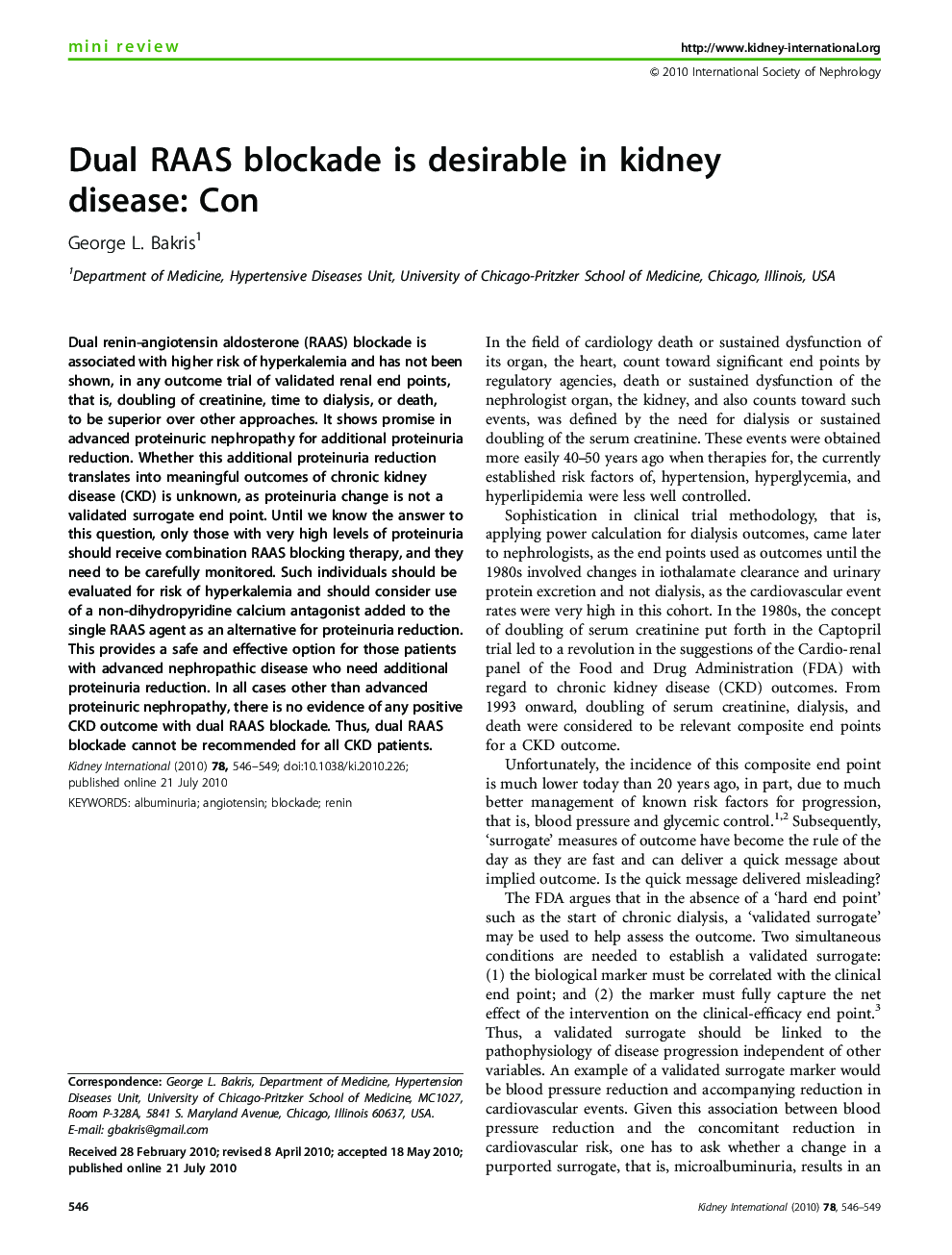| Article ID | Journal | Published Year | Pages | File Type |
|---|---|---|---|---|
| 3883478 | Kidney International | 2010 | 4 Pages |
Dual renin–angiotensin aldosterone (RAAS) blockade is associated with higher risk of hyperkalemia and has not been shown, in any outcome trial of validated renal end points, that is, doubling of creatinine, time to dialysis, or death, to be superior over other approaches. It shows promise in advanced proteinuric nephropathy for additional proteinuria reduction. Whether this additional proteinuria reduction translates into meaningful outcomes of chronic kidney disease (CKD) is unknown, as proteinuria change is not a validated surrogate end point. Until we know the answer to this question, only those with very high levels of proteinuria should receive combination RAAS blocking therapy, and they need to be carefully monitored. Such individuals should be evaluated for risk of hyperkalemia and should consider use of a non-dihydropyridine calcium antagonist added to the single RAAS agent as an alternative for proteinuria reduction. This provides a safe and effective option for those patients with advanced nephropathic disease who need additional proteinuria reduction. In all cases other than advanced proteinuric nephropathy, there is no evidence of any positive CKD outcome with dual RAAS blockade. Thus, dual RAAS blockade cannot be recommended for all CKD patients.
